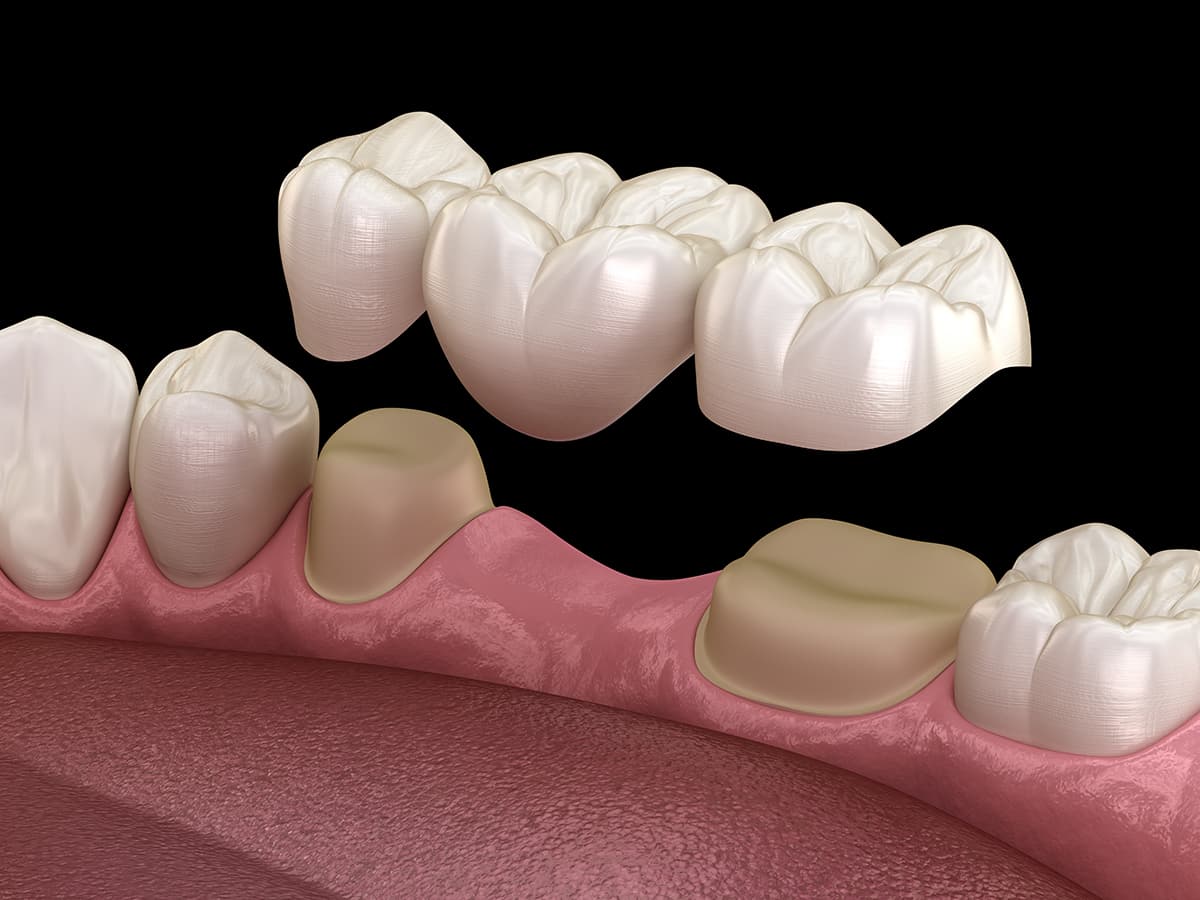ADVANTAGES AND RISKS IN CHOOSING A DENTAL BRIDGE TO REPLACE A MISSING TOOTH
One of the various restorative alternatives for replacing your missing teeth is a dental bridge. The dental bridge fills the gap left by tooth loss between the teeth, as its name suggests.
This dental bridge is made up of three crowns: the central crown functions as a pontic or artificial tooth, and the two crowns at either end of the bridge act as abutments or anchors to the healthy adjacent teeth next to the gap.
Dental implants are used in situations where there are no healthy neighbouring teeth available to act as abutments. A fixed dental bridge has an abutment crown that is bonded to either the healthy surrounding teeth or a dental implant.
A dental bridge is one of the several restorative options for restoring your missing teeth. As its name implies, the dental bridge bridges the gap created by missing teeth between the teeth. Three crowns make up this dental bridge: the middle crown serves as an artificial tooth or pontic, and the two crowns on either end serve as abutments or anchors to the healthy adjacent teeth close to the gap.
When there are no healthy surrounding teeth available to serve as abutments, dental implants are employed. An abutment crown on a fixed dental bridge is Quincy dentist cemented to either the neighbouring healthy teeth or a dental implant.
A dental bridge is typically completed in two appointments. To make the operation more comfortable, a local anaesthetic is administered into the teeth that will act as abutments during the initial dental appointment. It is necessary to resize and reshape the healthy teeth that will act as abutments in order to make room for the crowns that will keep the pontic in place.
In order to create a dental bridge that is specifically fitted for
each patient, a dental impression of the abutments is then taken. A temporary
bridge is then erected to cover the ready abutments. The temporary bridge is
taken down and replaced with your custom-fit bridge at your second visit, and
it is adjusted to guarantee correct fitting.
Usually, a dental bridge requires two appointments to complete. During the initial dental appointment, a local anaesthetic is put into the teeth that will serve as abutments to make the procedure more comfortable.
The healthy teeth that will serve as abutments must be reshaped and resized to make room for the crowns that will hold the pontic in place. Then, a dental impression of the abutments is made in order to make a dental bridge that is uniquely tailored for each patient.
The prepared abutments are
then covered by a temporary bridge. At your second visit, the temporary bridge
is removed and replaced with your custom-fit bridge, which is then adjusted to
ensure proper fitting.
The usage of dental bridges has benefits and drawbacks.
The benefits are:
- It acts as a tooth substitute
- Your teeth's ability to properly chew food and speak clearly is restored
- It stops the movement of your remaining teeth, which can affect your bite
- By lowering the chance of bone loss, it keeps your face's facial structures intact
- Since the bridges are set in place forever, they cannot move like dentures
Dental bridges have a number of dangers, including:
- The tooth beneath the crown may get decayed due to a poorly fitting bridge
- To fit the appliance in place, the normal, healthy tooth structures must be reduced
- If the teeth that are supporting the restoration are not strong enough, it could collapse

Comments
Post a Comment